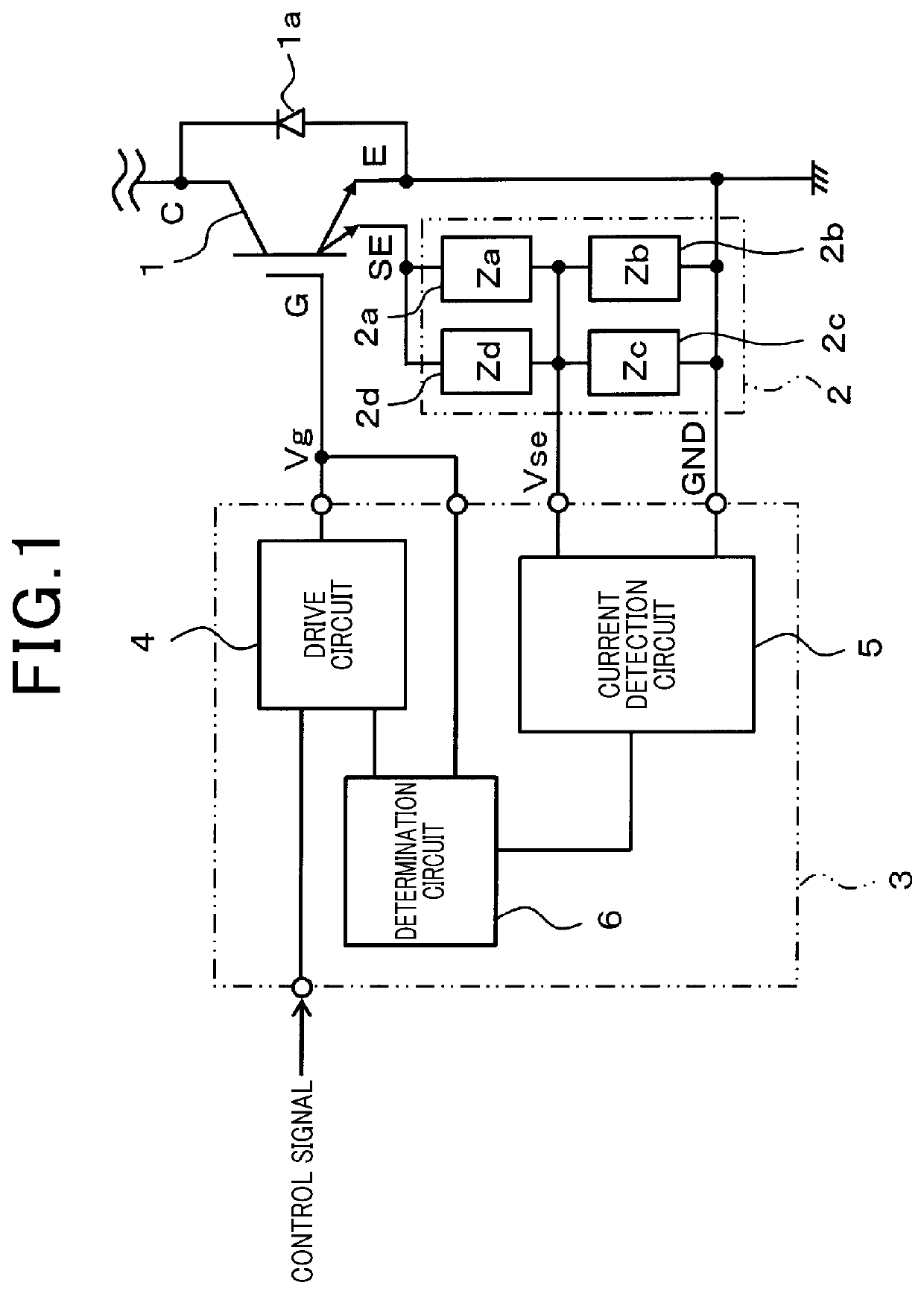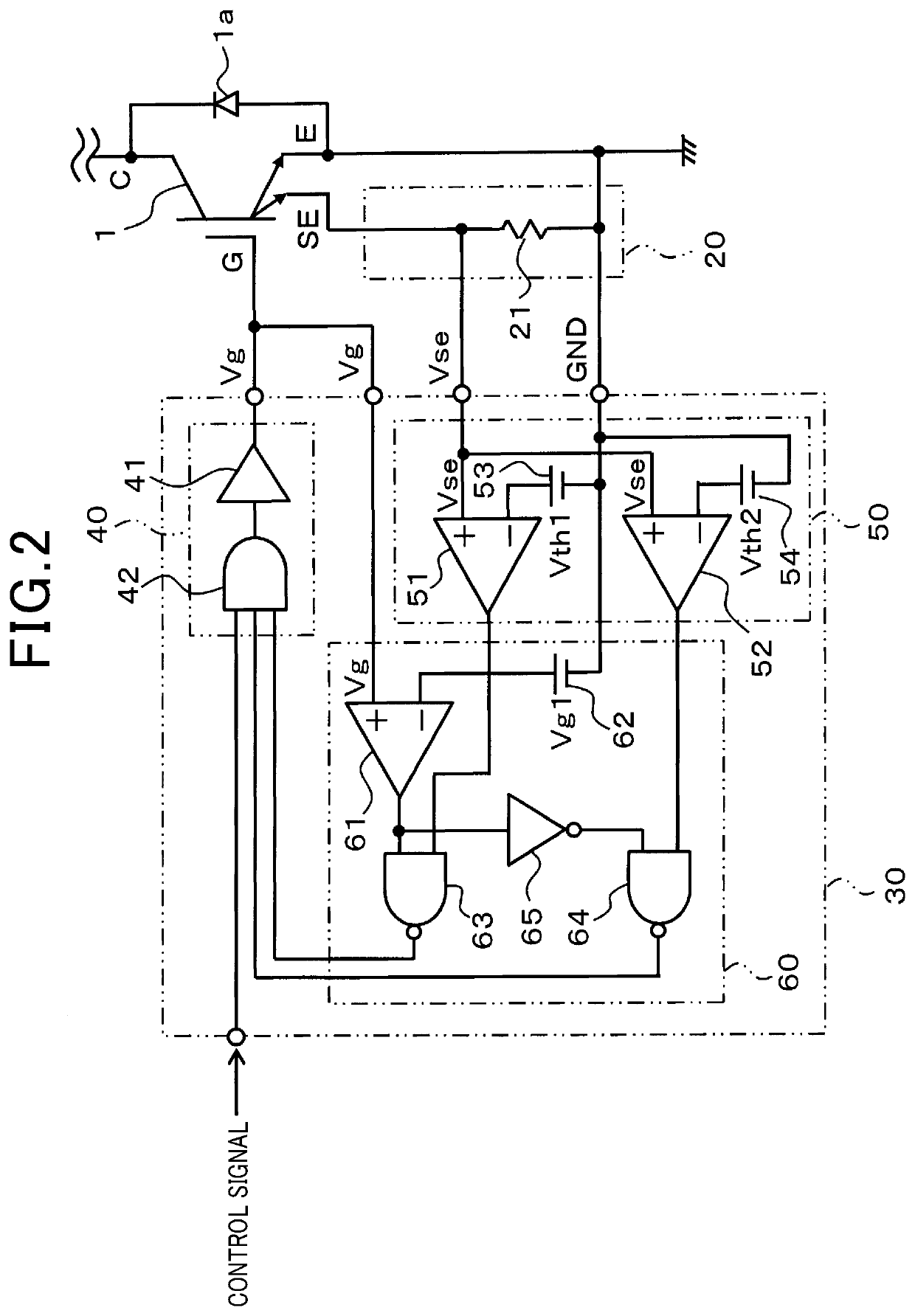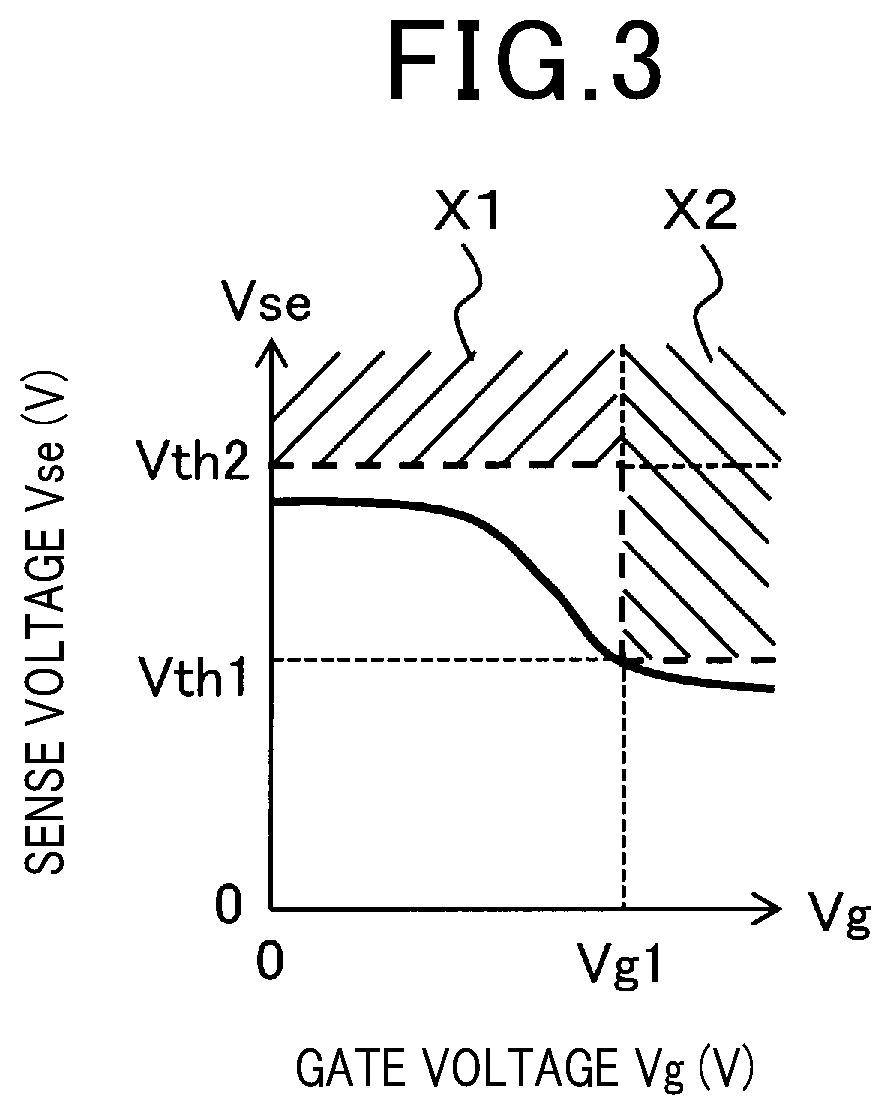Drive control apparatus for switching element
a control apparatus and switching element technology, applied in electronic switching, pulse technique, semiconductor devices, etc., can solve the problems of difficult to determine the abnormal operation, difficult to follow the control of a transient change, and inability to detect accurate current, etc., to achieve the effect of reducing current capacity
- Summary
- Abstract
- Description
- Claims
- Application Information
AI Technical Summary
Benefits of technology
Problems solved by technology
Method used
Image
Examples
first embodiment
[0061]The first embodiment will be described below with reference to FIG. 1 to FIG. 5.
[0062]In the first embodiment, a first system will be described that monitors a gate voltage to rapidly detect a state, such as overcurrent or short-circuit, of an IGBT 1, which is a switching element, and allow a protection operation to be performed.
[0063]In FIG. 1 that shows a basic configuration of the first system, the IGBT 1 integrally includes a main element and a sense element and the main element and the sense element are connected with collectors C and gates G in common. With respect to an emitter E of the main element, the sense element has a sense emitter SE provided to detect a current proportional to a current flowing in the main element. In addition, in the IGBT 1, a diode 1a is connected between the collector C and the emitter E. The diode 1a may be incorporated in the IGBT 1 or provided externally.
[0064]In the IGBT 1, the collector C to emitter E is connected between a load, not sho...
second embodiment
[0085]FIG. 6 shows the second embodiment and hereinafter illustrates parts different from the first embodiment. In this embodiment, as a configuration to detect the gate voltage Vg of the IGBT 1, as shown in FIG. 6, provided is a determination circuit 60a using a voltage dividing circuit of resistors 66 and 67. In the configuration, a series circuit of the resistors 66, 67 is connected between the gate G and the ground, and the common connection point thereof is input to the third comparator 61 of the determination circuit 60a.
[0086]The gate voltage Vg is divided by the resistors 66, 67 and is input to the third comparator 61 as a voltage Vga proportional to the gate voltage Vg. In accordance with this configuration, the reference power supply 62 sets Vg2 instead of the switching voltage Vg1.
[0087]Hence, also with the second embodiment described above, effects similar to those of the first embodiment can be obtained. In addition, since the gate voltage Vg is divided by the resistor...
third embodiment
[0088]FIG. 7 shows the third embodiment, which is different from the first embodiment in that a region of the gate voltage Vg is divided into three regions by Vg1 and Vg2, and in the respective three regions, threshold voltages Vth1, Vth2, and Vth3 of the sense voltage Vse are set.
[0089]As shown in FIG. 7, accuracy in detecting an abnormality is enhanced by finer setting of the threshold voltage in consideration of the relation between the gate voltage Vg and a standard sense voltage Vse. In this case, the conditions that the value of the sense voltage Vse indicates an overcurrent or a short-circuit abnormality are the following expressions (a) to (c) depending on the value of the gate voltage Vg. These are conditions for cases corresponding to regions indicated by hatched lines in FIG. 7. In the determination circuit 60, it can be configured so that three comparators are provided and are switched depending on the gate voltage Vg.
When Vg≥Vg1,Vse>Vth3 (a)
when Vg1≥Vg≥Vg2,Vse>Vt...
PUM
 Login to View More
Login to View More Abstract
Description
Claims
Application Information
 Login to View More
Login to View More - R&D
- Intellectual Property
- Life Sciences
- Materials
- Tech Scout
- Unparalleled Data Quality
- Higher Quality Content
- 60% Fewer Hallucinations
Browse by: Latest US Patents, China's latest patents, Technical Efficacy Thesaurus, Application Domain, Technology Topic, Popular Technical Reports.
© 2025 PatSnap. All rights reserved.Legal|Privacy policy|Modern Slavery Act Transparency Statement|Sitemap|About US| Contact US: help@patsnap.com



